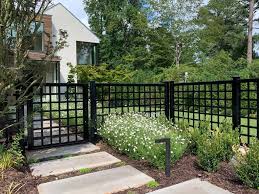Above their sensible application, fences hold powerful symbolic significance in human being societies, representing concepts of possession, personal identity, and societal boundaries. As actual physical symptoms of limitations, fences shape our perceptions of space and effect our interactions using the built surroundings. Let’s investigate the symbolic importance of fences (ploty) and realize why these are not only structures—they are signs of individual culture and community.
1. Possession and Territory:
fences (ploty) signify possession and territorial restrictions, marking where one particular home finishes and the other starts. By understanding limitations, fences establish a feeling of ownership and power over land, strengthening individual or combined identification. In rural regions, fences work as perceptible marker pens of property acquisition, delineating job areas, pastures, and residence lines. In urban adjustments, fences demarcate exclusive residence from public place, asserting ownership and exclusivity.
2. Societal Division and Exclusion:
Fences could also symbolize societal divisions and exclusions within community. Higher walls and barriers may denote separation and inequality, producing physical boundaries that split residential areas according to socio-financial reputation or another factors. Alternatively, fences with open up gates and lower walls symbolize inclusivity and interconnection, appealing connection and cultivating a feeling of local community. The design and visibility of fences represent fundamental interpersonal dynamics and energy components.
3. Social Identification:
In many cultures, fences hold deeply cultural importance and so are imbued with meaning that mirrors societal values and cultures. For instance, in a few countries, ornate fences are emblems of status and prestige, displaying riches and success. As opposed, in other cultures, simple and functional fences could be respected with regard to their functionality and utilitarianism. Understanding the social framework of fences helps us enjoy their symbolic significance in various communities.
4. Mental health Restrictions:
Fences could also represent psychological borders that determine personalized area and autonomy. By producing actual barriers, fences offer people with feelings of safety and security, permitting them to establish limitations and manage usage of their private space. This sense of boundary management is vital for maintaining mental health well-getting and social interactions, since it permits visitors to assert their autonomy and shield their personal boundaries.
5. Environment Effect:
The proliferation of fences has environmental effects, especially in all-natural scenery and wild animals environments. Substantial fencing can fragment environments and interrupt animals corridors, affecting biodiversity and ecosystem overall health. Nevertheless, eco-pleasant fencing options, for example wild animals-helpful models and permeable boundaries, offer you solutions that balance man demands with environmental preservation. By lessening their enviromentally friendly footprint, fences can give rise to the preservation of organic panoramas and wild animals environments.
To sum it up, fences are not just physical constructions these are icons that represent intricate sociable, societal, and psychological dynamics. As guardians of restrictions, fences condition human being interaction and panoramas, reflecting and strengthening social ideals and norms. Appreciating the symbolic importance of fences enriches our comprehension of the developed setting and our partnership with all the land.



